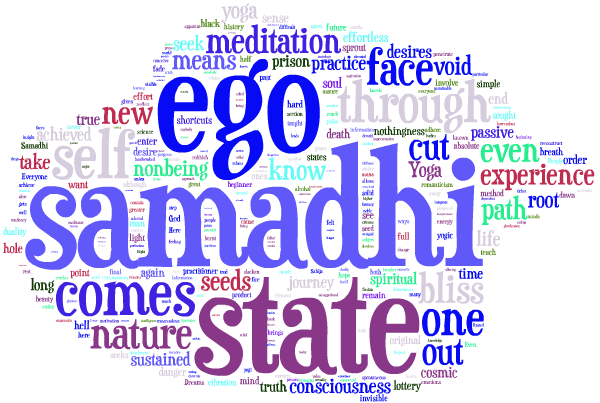Here is my last selection of quotes and extracts from Light on Life. In this final chapter, he’s writing about ethics, conceptions of God, truth, together with the full meaning of yoga.
The yogi is utterly disinterested but paradoxically full of being engagement of compassion. He is in the world but not of it.
…
Spiritual maturity exists when there is no difference between thought itself and the action that accompanies it. If there is a discrepancy between the two, then one is practising self-deception and projecting a false image of oneself.
…
Yogic knowledge is a centripetal force, for ever discarding the irrelevant in order to invest in search for the core of being where enduring truth resides.
…
Savasana is about relaxation, but what prevents relaxation? Tension. Tension results from clutching tightly to life–and in turn being held by the myriad invisible threads that ties us to the known world, the known ‘I’, and the known environment in which it operates.
…
To relax is to cut tension. To cut tension is to cut the threads that bind us to identity. To lose identity is to find out who we are not. Intelligence is the scalpel that cuts away the unreal to leave only the truth. As you are lying on the earth in savasana, do you not when the posture is harmonious and balanced, feel both present and formless? When you feel present yet formless, do you not feel an absence of specific identity? You are there, but who’s there? No one. Only present awareness without movement and time is there. Present awareness is the disappearance of time in human consciousness.
…
If you try to imagine time without using spatial concepts you will find it extremely difficult.
…
As a length of time, the present simply does not exist. How then can we live in the present? It is a paradoxical impossibility.
…
Dharma is about the search for enduring ethical principles, about the cultivation of right behaviour in physical, moral, mental, psychological, and spiritual dimensions.
…
The earliest Latin root of the word ‘religion’ means to be aware, and absolute awareness will never perceive difference or conflict.
…
The yogi cannot be afraid to die, because he has brought life to every cell of his body. We are afraid to die because we are afraid we have not lived.
…
One’s spiritual growth is only ever demonstrated by one’s actions in the world.
…
Ethics is the glue that binds earth to heaven. One cannot serve two masters. The only way human beings can reconcile the paradox of the demands of earth and soul is through the observation of ethical principles.
…
Cheats always lose. They are unmasked because they are transparently dishonest, deceive themselves, and fail in their human duty.
…
Action mirrors man’s personality better than his words.
…
It is better not to believe in God and act as though he existed, than to believe in God and act as if he did not exist.
…
Normally when we question anyone about whether he believes in God or not, we reduce God to a material thing. We reduce him to the level of matter, to something that can be believed in. Therefore it becomes a matter of belief. As the universe, which is beyond the reach of our consciousness, is unknown to us, so the entity that is God, which is beyond the reach of our consciousness, is unknown to us.
…
As has one increasingly feels the existence and pull of the divine, one’s actions more easily align with the ethical impulse of the absolute.
…
Spirituality is not playacting at being holy but the inner passion and urge for self realisation and the need to find the ultimate purpose of our existence.
…
Truth is an absolute of staggering power.
…
As yoga practice develops and the afflictions and obstacles to yoga interfere with us less, we begin to have some inkling of the glory of truth.
…
We should not use truth as a club with which to beat other people. Morality is not about looking at other people and finding them inferior to ourselves. Truth has got to be tempered with social grace.
…
Love is an investment, lust is a waste.
…
Ego is on an elastic and will always pull you back. Only the practice of meditation will eventually erode the attraction between ego and self-identity.
…
Surrender to God is not surrender to what you think God wants. It is not surrender to your conception of the will of God. It is not God giving you instructions. As long as ego persists, your interpretation of God’s wishes will be fragmented by the distorting prism of ego.
…
The ultimate reach of yoga is the total transformation of consciousness that pervades our whole being with awareness and that knows no frontiers.
…
My body and mind are the servers and followers of the soul. The unity of these three gives me the right to call myself a yogi.
…
The complexity of the life of the mind comes to an end at death, with all its sadness and happiness. If one is already free from that complexity, death comes naturally and smoothly.






